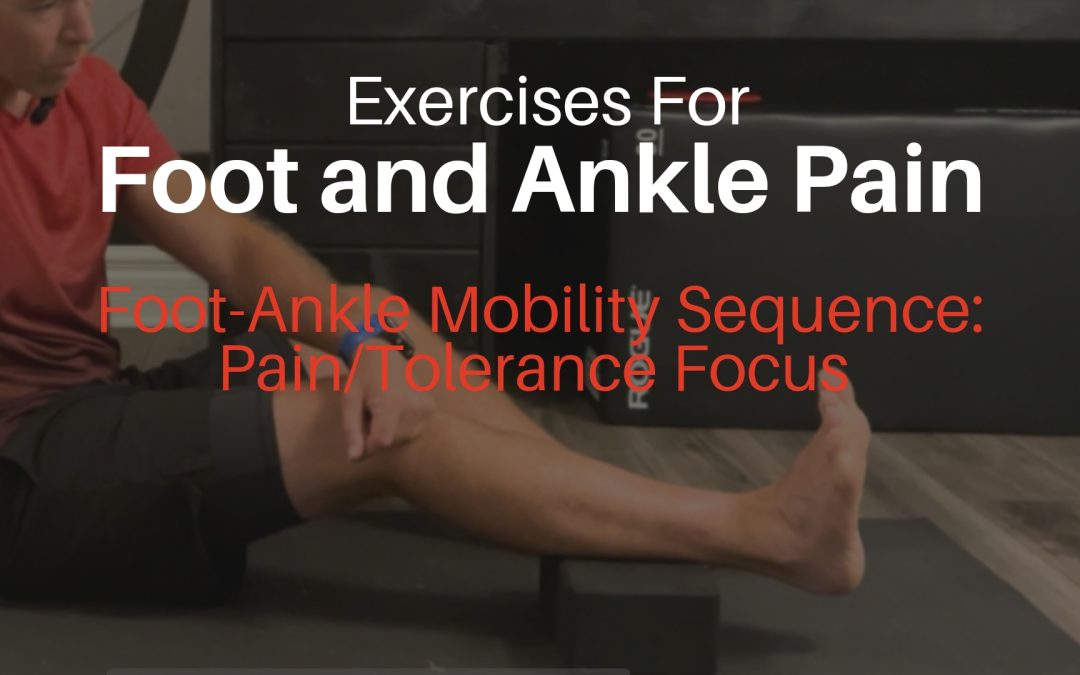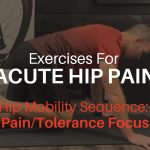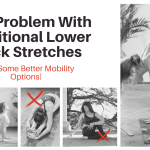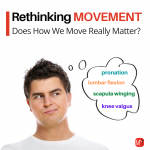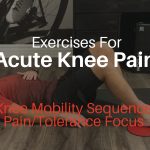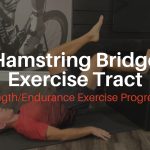Exercises For Foot And And Ankle Pain
Foot and ankle pain is a common presentation in chiropractic offices and other other health care clinics. In this article I’m going to talk about how to target an acute injury or a foot and ankle condition that is what we would classify as “movement sensitive” with respect to our exercise prescription.
As always, let’s start with some context. And, as I’ve talked about many times in the past, when treating pain and dysfunction the first thing we need to do is develop tolerance to basic movements.
I think of it this way… If the foot and ankle can’t perform basic motions like dorsiflexion and plantarflexion or pronation and supination, the foot is either going to hurt all day, or gait and other weight bearing activities are going to be significantly altered as the body has to find alternate movement strategies to avoid the painful movements and painful positions.
So, when dealing with a painful and sensitive foot or ankle, we need to focus our exercise prescriptions towards building tolerance to these basic, fundamental movements. And what I’m going to review in this video is my basic movement sequence that I use for a painful and movement sensitive foot and/or ankle.
Acute Foot and Ankle Pain: Here’s What We’ll Cover
We’ll start with the movement routine itself, and look at the 4 specific exercises that make up the routine. Then, once we’ve covered the specific exercises, I’ll wrap up the article by discussing key programming and progression criteria.
That’s where we’ll talk about how many sets and reps the patient needs to perform, how often they need to perform the routine, what’s OK and not OK as far as any symptoms they may feel during the exercises, and when we know when it’s time to progress the patient into the next phase of care.
And just as one last FYI, remember, if you are a My Rehab Connection subscriber and you use our exercise prescription software, you can find all of these exercises in our Exercise Library. You can either search for them by name in the Exercise Library itself, or you can find this movement sequence in the Exercise Groups section under the title, Basic Foot/Ankle Movement Sequence: Pain/Mobility Focus.
Now let’s take a look at the exercises themselves.
Acute Foot and Ankle Movement Sequence: Pain/Mobility Focus
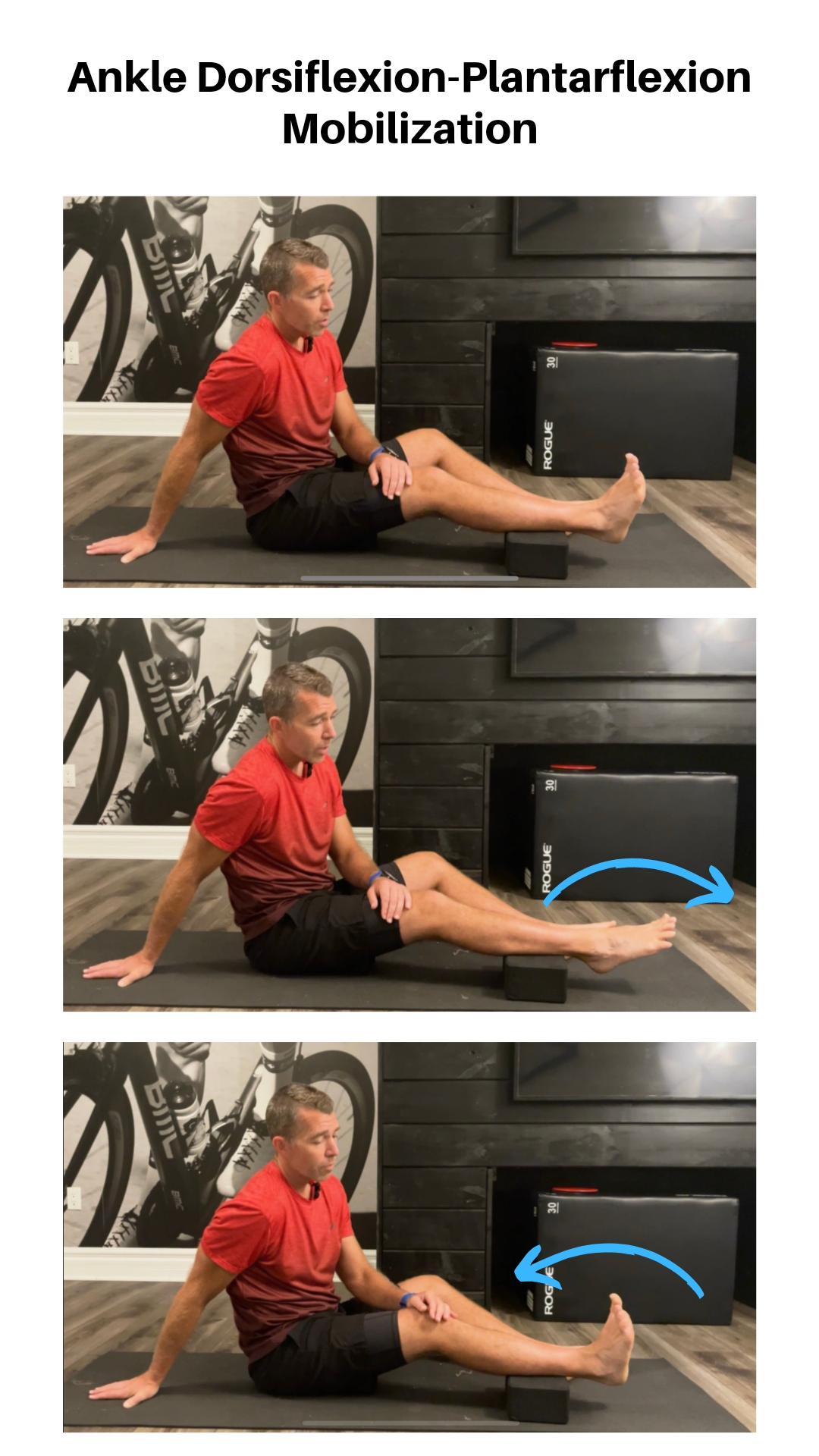
To perform the exercise:
- Begin seated with your foot off the floor.
- Actively pull your foot up towards you and hold for 1-2 seconds. Move as far as you can but do not move into pain.
- Now actively push your foot down away from you and hold for 1-2 seconds. Again, move as far as you can but do not move into pain.
- Repeat this back and forth motion 10 times. Move slowly and focus on creating movement through your ankle and feeling the stretch/contraction in the muscles of your lower leg and foot.
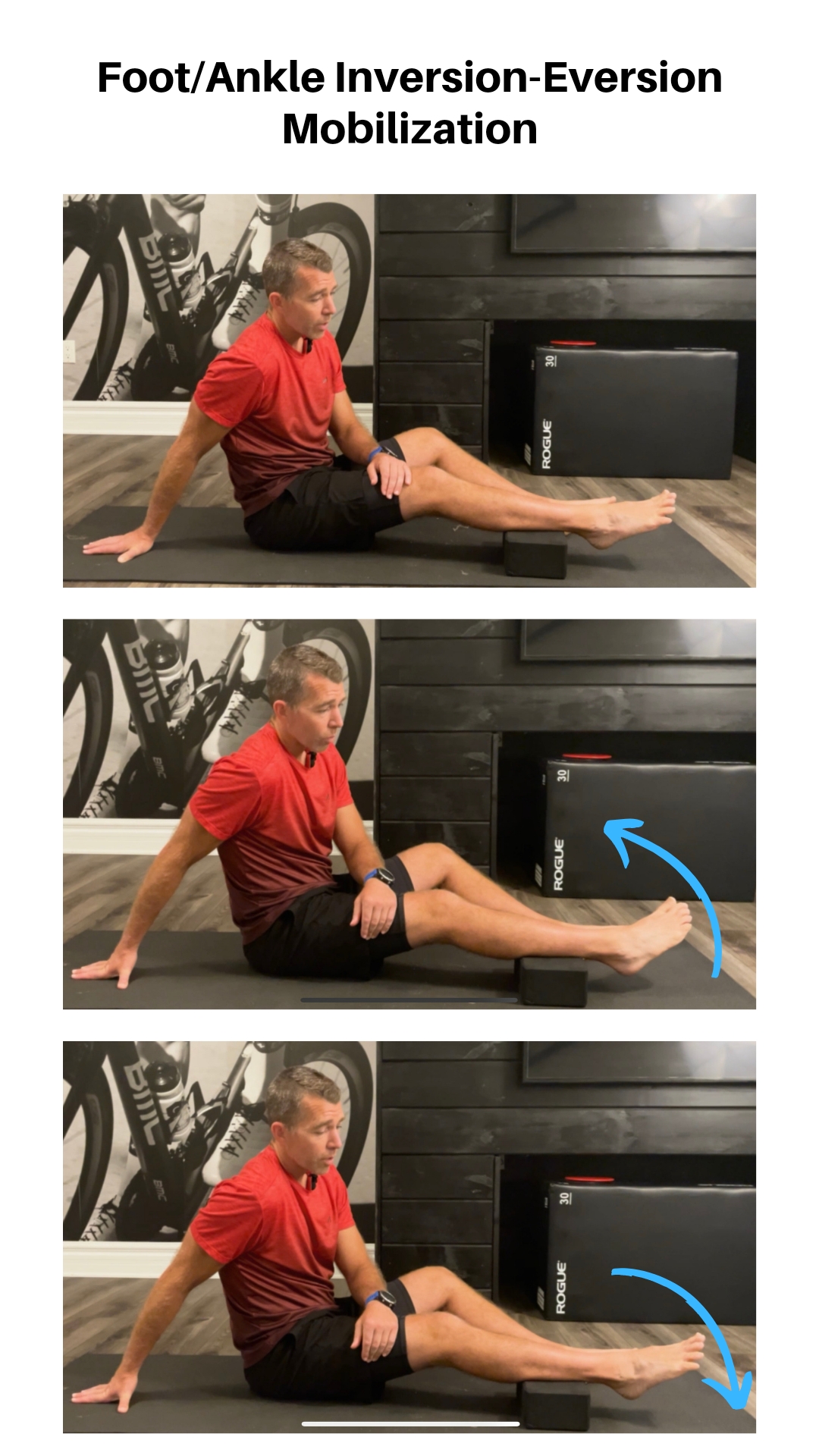
To perform the exercise:
- Begin seated with your foot off the floor.
- Actively pull your foot/ankle inwards and hold for 1-2 seconds. As you do this focus on pulling your heel with the muscles on the inside of your lower leg and ankle. Move as far as you can but do not move into pain.
- Now actively pull your foot/ankle outwards and hold for 1-2 seconds. As you do this focus on pulling your heel with the muscles on the outside of your lower leg and ankle. Again, move as far as you can but do not move into pain.
- Repeat this back and forth motion 10 times. Move slowly and focus on creating movement through your ankle and feeling the stretch/contraction in the muscles of your lower leg and foot.
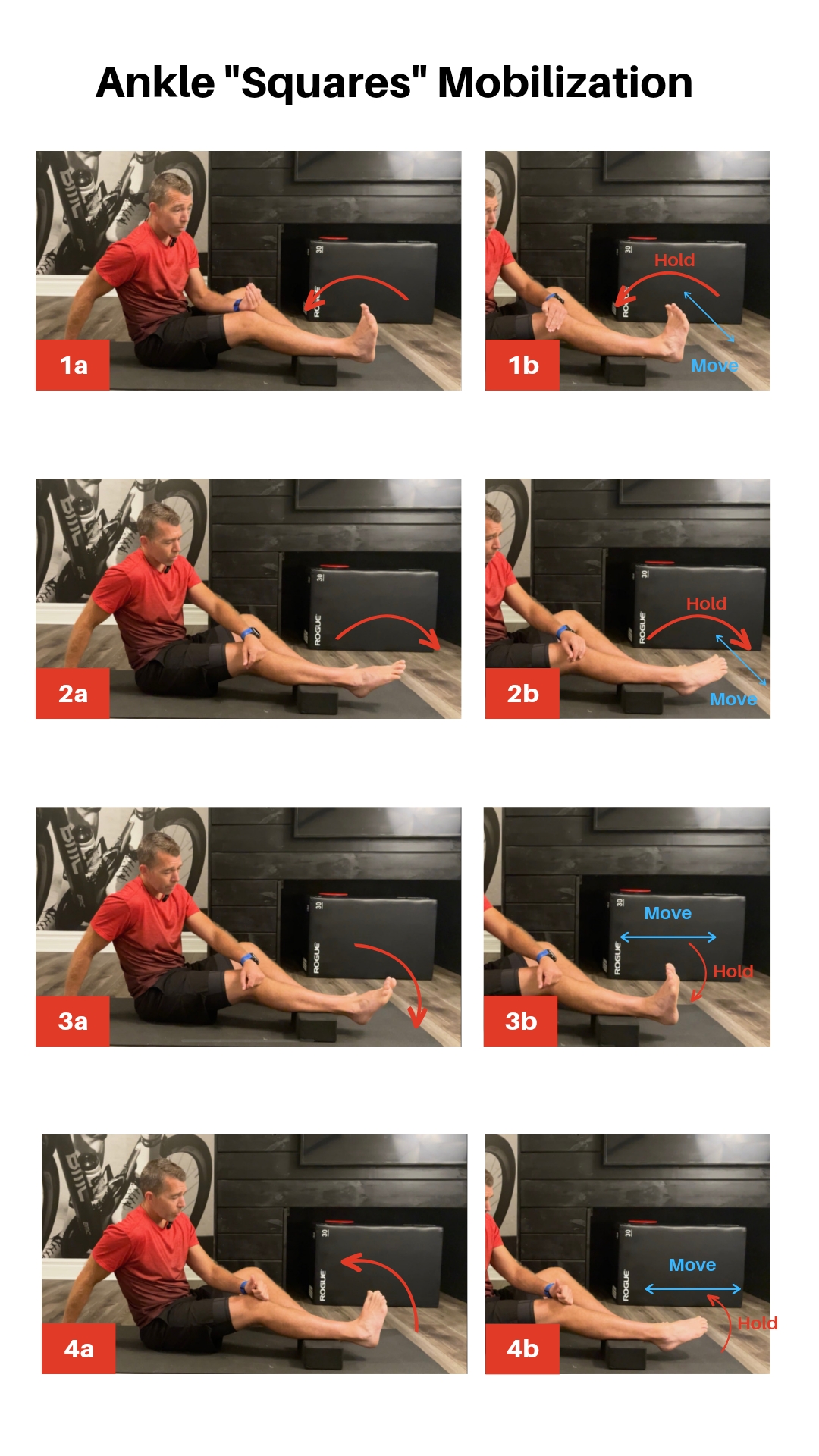
To perform the exercise:
- Begin seated with your foot off the floor. It will work better if you support your lower leg so your foot and heel are free to move.
- Now actively pull your foot up towards your lower leg. Focus on feeling the muscle tension/contraction along the from of your shin/lower leg. Hold this contraction/tension.
- Keeping your foot pulled up (hold the muscle tension along the front of your lower leg) pull your heel/foot inwards and outwards.
- As you do this focus on pulling your foot/heel with the muscles on the inside of your foot and ankle. Don’t allow your leg to rotate as you move. Perform 5-10 repetitions.
- Now press your foot/ankle down.
- Hold the foot down (hold the muscle tension in the calf) pull your heel/foot inwards and outwards. As you do this focus on pulling your foot/heel with the muscles on the inside of your foot and ankle. Don’t allow your leg to rotate as you move. Repeat this back and forth motion 5-10 times.
- Now pull your foot/ankle up outwards.Hold the foot outward as you pull the foot up and down. Repeat this back and forth motion 5-10 times.
- Now pull your foot inwards.
- Hold the foot inwards as you pull the foot up and down.Repeat this back and forth motion 5-10 times.
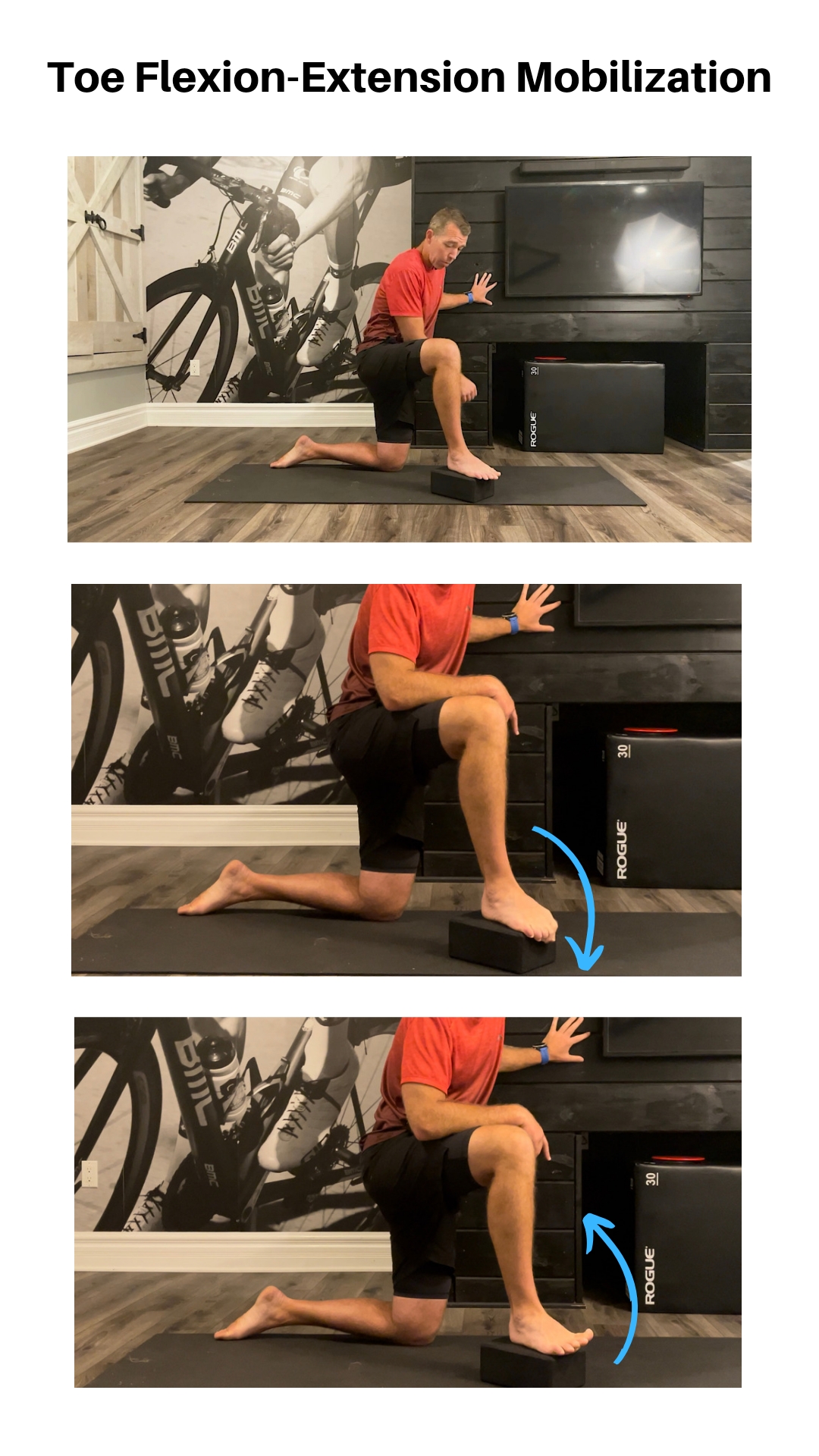
To perform the exercise:
- Begin in a seated, kneeling, or standing position with your foot resting on a yoga block or on the edge of a stair. Your heel and forefoot should be resting on the block but your toes should be free off the block.
- Curl your toes down and hold for 1-2 seconds.
- Now lift your toes up. As you lift up focus on keeping the ball of your foot (the joints that connect your toes to your foot) flat against the block.
- Hold the toes up for 1-2 seconds then curl the toes down again.
- Slowly alternate these movements for 10 repetitions
Programming and Progression Criteria
Now that we’ve gone over the program itself, let’s go over programming and progression criteria
First, the key with these motions is to move to symptom tolerance. In other words, we want to move as far as possible into each direction, but we don’t want to force the foot or ankle into painful positions that it’s not ready for, or it doesn’t feel safe moving into.
The balance we’re trying to strike is that we don’t want to avoid these movements altogether as we know movement can be such a powerful way to influence tissue and guide healing. But we also don’t want to force the motion and flare-up the condition.
So the basic rule is that some mild achy symptoms are OK, and can even be beneficial to dial down the pain response, but we’ll limit the range that we use to keep the exercises well with symptom tolerance.
Also remember to explain this to patients, especially with a really acute ankle sprain or significant foot pain that may make the patient a little hesitant or even fearful of moving, especially if some of these movements create or reproduce some symptoms.
Here it can be very helpful to point out to patients that these are all gentle non-weight bearing exercises. So any symptoms that they experience – at least if we are keeping the movements to symptom tolerance as we just discussed – will be a result of tissue inflammation or sensitivity as opposed to further tissue damage or injury.
Programming
As far as programming, the typical prescription is going to be to perform each of these movements for 10 slow, deliberate repetitions. And they’re going to repeat this every few hours. So the idea here is to create a light, easy, controllable stimulus, but to provide this stimulus on a regular basis throughout the day
The other thing to point out here is that we don’t have to prescribe all of these exercises all at once. While I like all 4 of these movements as a full routine,depending on the patient and how sensitive the foot or ankle is I will often start with just the first 3 exercises, then as the pain settles and they get the hang of the basic exercises I will then add the ankle squares exercise.
Progression Criteria
Finally, let’s talk about progression criteria. Remember, the big picture here, which is to build and restore the tolerance to these basic, fundamental foot and ankle motions and positions. Here we’re looking for the point when the motion is no longer limited by symptoms and the patient is able to tolerate, and even push and contract into, these end range positions. As soon as the patient can tolerate these end range positions we can then progress the exercises.
Here that would typically mean transitioning the exercises and movement routine from a pain/tolerance focus to concentrate more on foot and ankle mobility and control.

